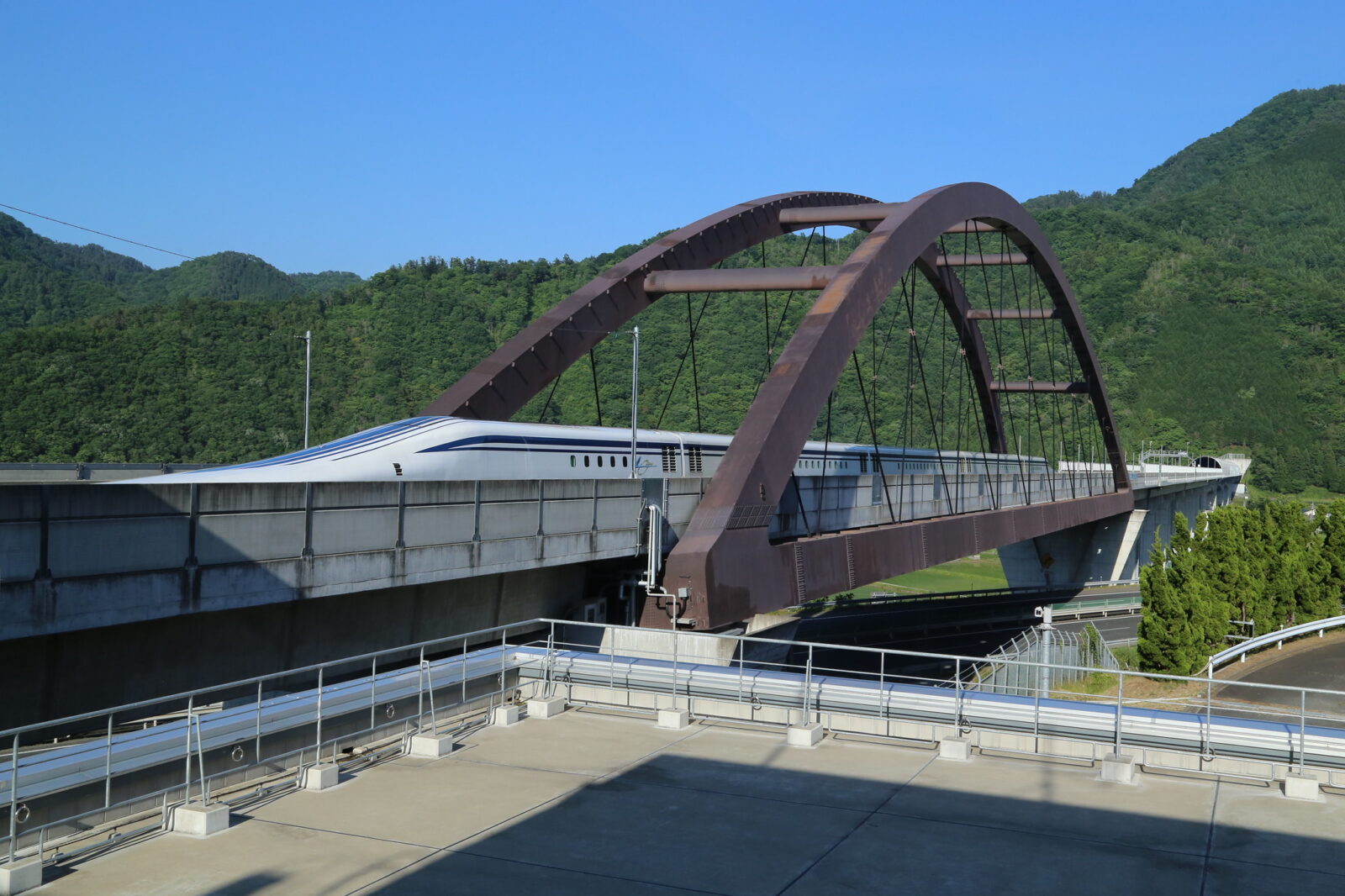Caltrain Completes Electrification Between San Francisco and San Jose Caltrain, with partners Pacific Gas and Electric Company (PG&E) and Balfour Beatty, has completed energization of the 51-mile corridor between San Francisco and San Jose. Caltrain can now begin...
Photo: Exploring a Future Partnership with Japan to build a Baltimore-Washington Line to extend to the North East Corridor by Steve Kwak at SCMAGLEV Center, Yamanashi Prefecture, Japan
Two projects that would transform passenger rail in the NEC have made progress this week. The Capital Regional Rail Vision (CRRV) was advanced by the Greater Washington Partnership (GWP) with the release of a technical report. The project aims to advance a unified, competitive, modern rail network from Baltimore to Richmond. The other project is the Baltimore-Washington Superconducting Maglev Project that is now accepting public comment on their Draft Environmental Impact Statement.
The CRRV’s goal is to unite the region behind a plan to convert commuter train systems into a network of high-frequency, all-day service that spans the entire region. In this case they are looking to integrate MARC and VRE service, provide all day service with at least 15-minute frequencies, a unified fare policy, one-seat rides in both direction and a coordinated & expanded rail investment program.
The report identifies a need for investments up to $23 billion, including about $14 billion for revitalizing aging infrastructure, nearly $7 billion for station improvements and $287 million for fleet upgrades.
The CRRV project is joined by the Baltimore-Washington Super Conducting Maglev (SCMAGLEV) proposed high-speed line. This project is now taking public comments on their Draft Environmental Impact Study (DEIS) which was released in January.
The route would connect Washington DC and Baltimore, with an intermediate stop at BWI Thurgood Marshall Airport and ultimately would be extended to New York City. Service on the Maglev route would include 8 trains/hour at peak times and 4 in each direction on weekends with a seat capacity of 762. Traveling speeds will reach up to 311 mph, enabling a 15 minute trip from DC-Baltimore and a one-hour trip from DC-NYC. This is currently the fastest ground transportation system in the world, having set the world record at about 375 mph in 2015.
The technology for an SCMAGLEV system has been in development since the 1970’s in Japan, where they are currently constructing a route between Tokyo and Nagoya. There is also a 26.6 mile test track called the Yamanashi Maglev Line that was completed in 1997, this has been used by JR Central to help evolve the SCMAGLEV rolling stock and all the technologies required for commercial services.
For those unfamiliar with the technology, SCMAGLEV accelerates and decelerates through a magnetic force generated between the onboard superconducting magnets and electromagnetic coils that are powered with electricity. While running at lower speeds the train drives on rubber wheels and at approximately 93 mph the train levitates above the track.
This project would work well with the GWP’s vision for an enhanced regional rail network. Connecting entire regions by combining the transformative power of high-speed lines with the geographic coverage of regional rail and shared use lines is an approach that has worked around the world. It’s called the Integrative Network Approach and it’s what we are advocating for across North America.
Read More:
New Regional Rail Vision Aims to Bring D.C., Maryland and Virginia Closer Together
Capital Regional Rail Vision Technical Report
The Latest from HSRA
Our Latest Blog Posts
Check out the latest news, updates, and high speed rail insights from our blog!


